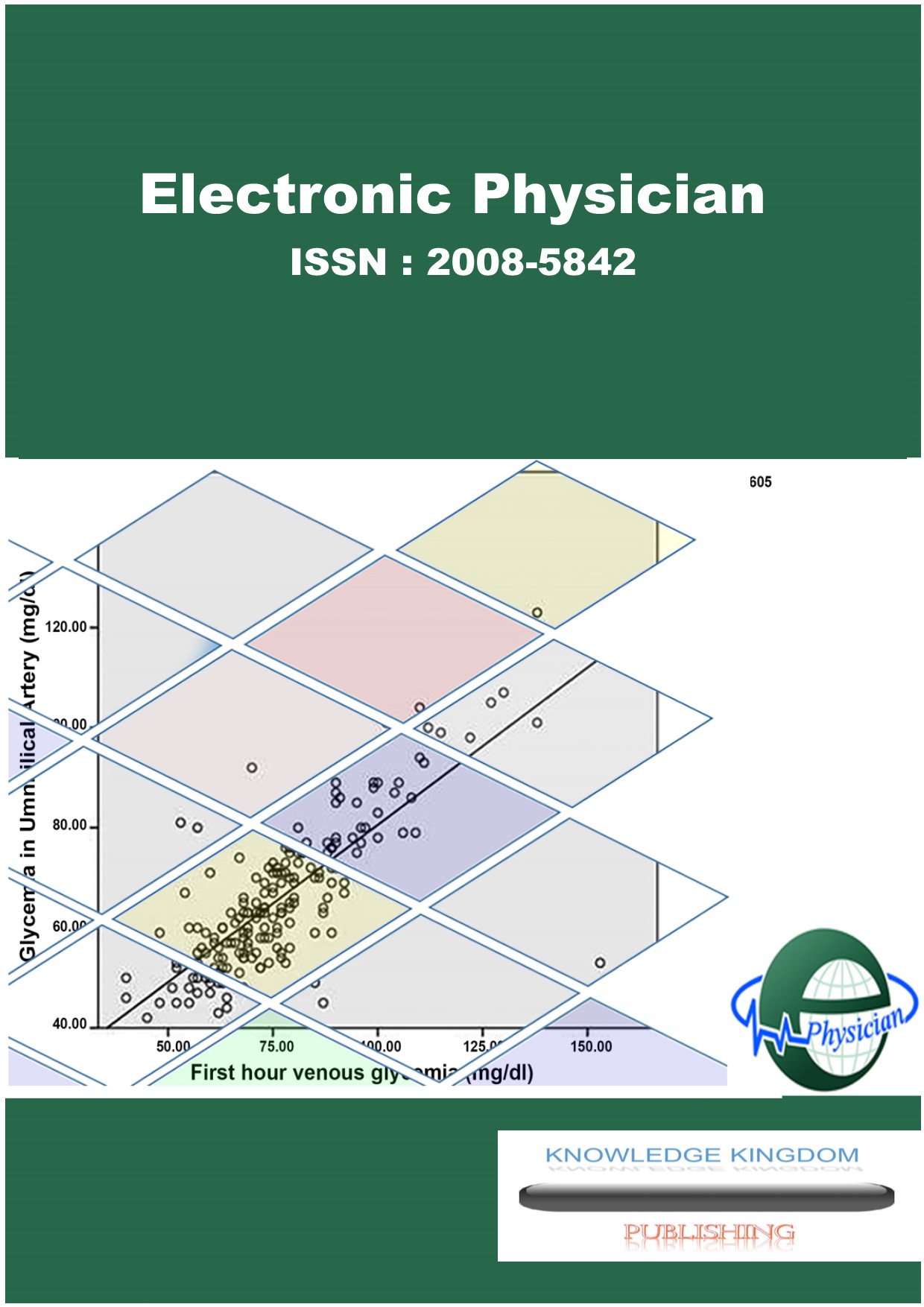Enclosed in the synergistic rings of suffering
The experience of conscious patients under mechanical ventilation in the intensive care unit of the causes of suffering
Keywords:
Intensive care unit, Mechanically ventilated patient, sufferingAbstract
Background: Patients undergoing mechanical ventilation in intensive care units are in a special position of suffering, and discovering their experiences in the painful situations of the intensive care unit can contribute greatly to improve the quality of nursing care for them. Objective: The present study was performed aiming to explain the experience of conscious patients receiving mechanical ventilation in the intensive care units of the causes of suffering. Methods: This is a qualitative content analysis study conducted in Iran in 2017. Participants of this study included 15 conscious mechanically ventilated patients in the intensive care unit. Semi-structured interviews and observations were used to collect data. For sampling, first, the purposeful and then theoretical methods (guided by the created categories) were used and the procedure continued until saturation of the data. The text of the handwritten notes of recorded interviews were analyzed using conventional qualitative content analysis. Results: Four subclasses of "unpleasant consequences of disease", "bitter elixir of therapy", "an inconvenient environment" and "understanding the threat to family safety and comfort" all under the general category "enclosed in the synergistic rings of suffering" were extracted from the profound descriptions of contributors. Conclusion: Mechanically ventilated patients in the intensive care unit are enclosed in the rings of suffering, so that each of these rings imposes a great deal of pain and suffering on the patient and have a synergic and intensifying effect on each other. Therefore, design and application of strategies and nursing care is essential to reduce the severity of the suffering and discomfort of these patients.References
Owens DA. Understanding Suffering. Journal of hospice and palliative nursing. 2005; 7(2): 68. doi:
1097/00129191-200503000-00003.
Georges JM. Suffering: Toward a Contextual Praxis. ANS Adv Nurs Sci. 2002; 25(1): 79–86. doi:
1097/00012272-200209000-00009. PMID: 12889579.
Kahn DL, Steeves RH. An understanding of suffering grounded in clinical practice and research. In:
Suffering. Sudbury, MA: Jones and Bartlett Publishers; 1996: 3–27.
Sadat Z, Abdi M, Aghajani M. Prevalence of Posttraumatic Stress Disorder and Related Factors Among
Patients Discharged From Critical Care Units in Kashan, Iran. Arch Trauma Res. 2015; 4(4): e28466. doi:
5812/atr.28466.
Khalaila R, Zbidat W, Anwar K, Bayya A, David M, Sviri S. Communication Difficulties and
Psychoemotional Distress in Patients Receiving Mechanical Ventilation. Am J Crit Care. 2011; 20(6): 470- 9. doi: 10.4037/ajcc2011989. PMID: 22045144.
Almeida TM, Azevedo LC, Nosé PM, Freitas FG, Machado FR. Risk factors for agitation in critically ill
patients. Rev Bras Ter Intensiva. 2016; 28(4): 413-9. doi: 10.5935/0103-507X.20160074. PMID:
, PMCID: PMC5225916.
Marasinghe MSP, Fonseka WIT, Wanishri PC, Nissanka NKSM, Santha De Silva B S. An Exploration of
Patients’ Experiences of Mechanical Ventilation. OUSL Journal. 2015; 9: 83-96. doi:
http://doi.org/10.4038/ouslj.v9i0.7328.
Karlsson V, Bergbom I, Forsberg A. The lived experiences of adult intensive care patients who were
conscious during mechanical ventilation: A phenomenological-hermeneutic study. Intensive Crit Care Nurs
; 28: 6-15. doi: 10.1016/j.iccn.2011.11.002. PMID: 22172747.
Kalfon P, Mimoz O, Auquier A, Loundou A, Gauzit R, Lepape A, et al. Development and validation of a
questionnaire for quantitative assessment of perceived discomforts in critically ill patients. Intensive Care
Med. 2010; 36: 1751-8. doi: 10.1007/s00134-010-1902-9. PMID: 20502874.
Kareshki H, Heydari A, Malekzade J, Esmaily H, Mohammadzadeh Z, Hesari moghaddam M, et al.
Design of psychometric assessment questionnaire to determine the causes of discomfort among patients
admitted to the intensive care unit. Evidence Based Care Journal. 2015; 5(14): 47-56. doi:
22038/EBCJ.2016.4059.
Samuelson KA. Adult intensive care patients’ perception of endotracheal tube-related discomforts: A
prospective evaluation. Heart lung. 2011; 40(1): 49-55. doi: 10.1016/j.hrtlng.2009.12.009. PMID:
Tembo AC. Higgins I, Parker V. The experience of communication difficulties in critically ill patients in
andbeyond intensive care: Findings from a larger phenomenological study. Intensive Crit Care Nurs. 2015;
(3): 171-8. doi: 10.1016/j.iccn.2014.10.004. PMID: 25486970.
Zeilani R. Seymour JE. Muslim women’s experiences of suffering in Jordanian intensive care units: A
narrative study. Intensive Crit Care Nurs. 2010; 26(3): 175-84. doi: 10.1016/j.iccn.2010.02.002. PMID:
Strubert H, Carpenter D. Qualitative research in nursing. Philadelphia: Wolters Kluwer; 2011.
Polit DF, Beck CT. Essentials of nursing research: appraising evidence for nursing practice. 8th ed.
Philadelphia: Wolters Kluwer, Lippincott Williams & Wilkins; 2014.
Mayring P. Qualitative Content Analysis. Forum: Qualitative Social research. 2000; 1(2): 25-30. doi:
17169/fqs-1.2.1089.
Graneheim UH, Lundman B. Qualitative content analysis in nursing research: concepts, procedures and
measures to achieve trustworthiness. Nurse Educ Today. 2004; 24(2): 105-12. doi:
1016/j.nedt.2003.10.001.
Boswell C, Cannon S. Introduction to nursing research: Incorporating evidence-based practice. Boston:
Jones and Bartlett Publisher; 2011.
Wood GL, Harber J. Nursing research: Methods & critical appraisal for evidence-based practice. New
York: Mosby Elsevier; 2010.
Karlsson V, Forsberg A, Bergbom I. Relatives' experiences of visiting a conscious, mechanically ventilated
patient--a hermeneutic study. Intensive Crit Care Nurs. 2010; 26(2): 91-100. doi:
1016/j.iccn.2009.12.001. PMID: 20060719.
Holm A, Dreyer P. Intensive care unit patients' experience of being conscious during endotracheal
intubation and mechanical ventilation. Nurs crit care. 2017; 22(2): 81-8. doi: 10.1111/nicc.12200. PMID:
Samuelson KA. Unpleasant and pleasant memories of intensive carein adult mechanically ventilated
patients--Findings from 250 interviews. Intensive Crit Care Nurs. 2011; 27: 76-84. doi:
1016/j.iccn.2011.01.003. PMID: 21371888.
Kjeldsen CL, Hansen MS, Jensen K, Holm A, Haahr A, Dreyer P. Patients' experience of thirst while being
conscious and mechanically ventilated in the intensive care unit. Nurs Crit Care. 2017. doi:
1111/nicc.12277. PMID: 28124464.
Published
Issue
Section
License
Copyright (c) 2020 KNOWLEDGE KINGDOM PUBLISHING

This work is licensed under a Creative Commons Attribution-NonCommercial 4.0 International License.









